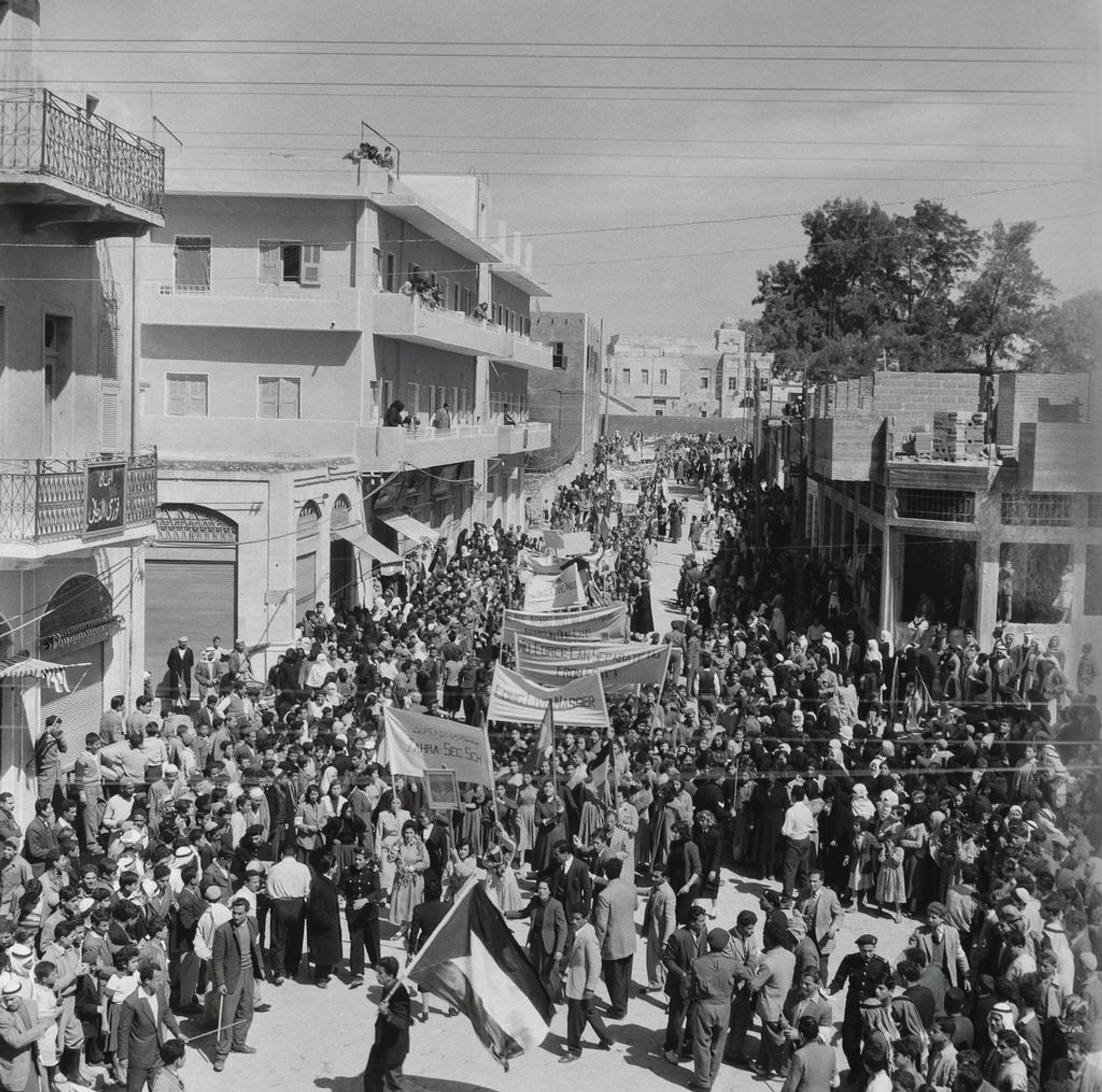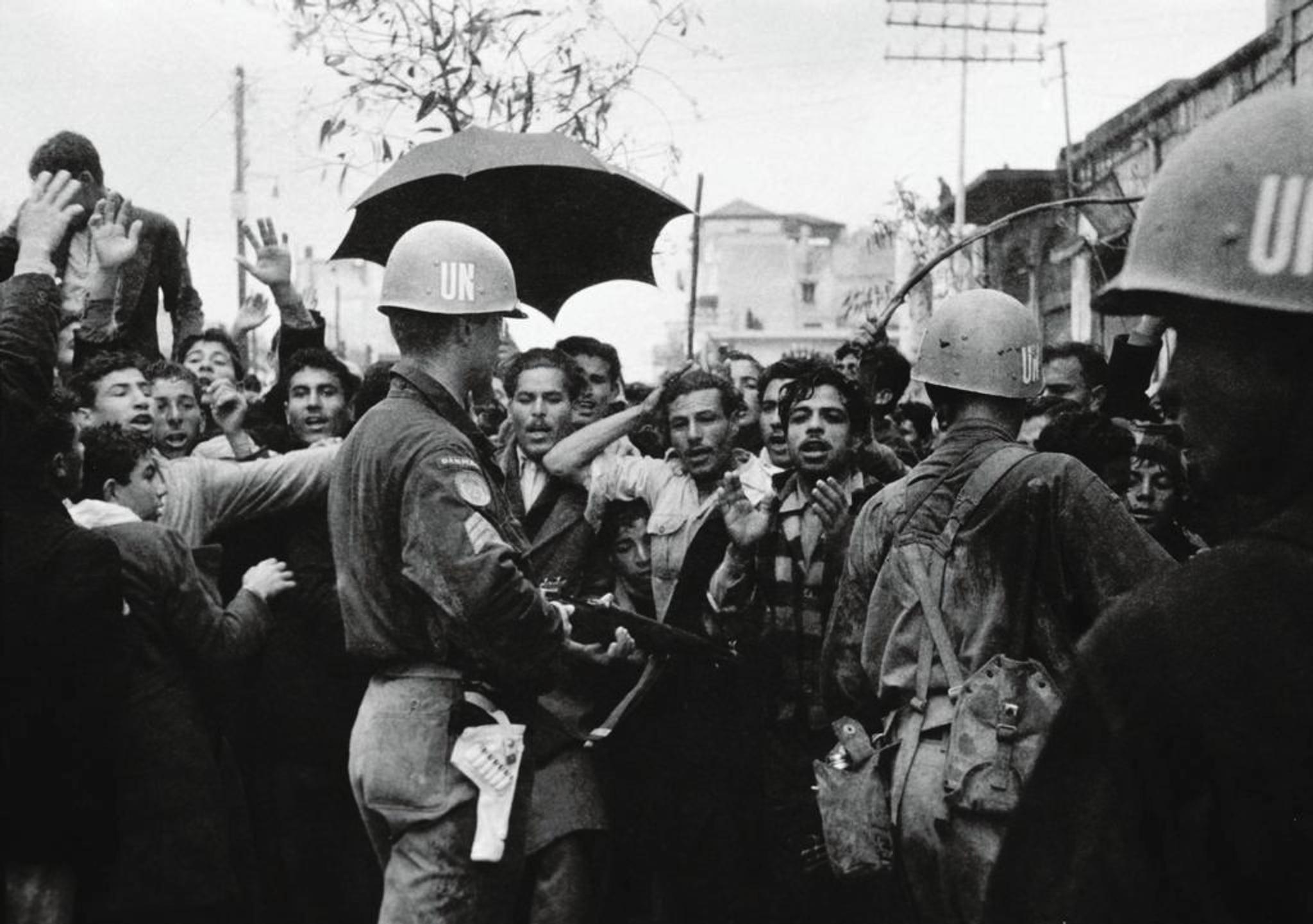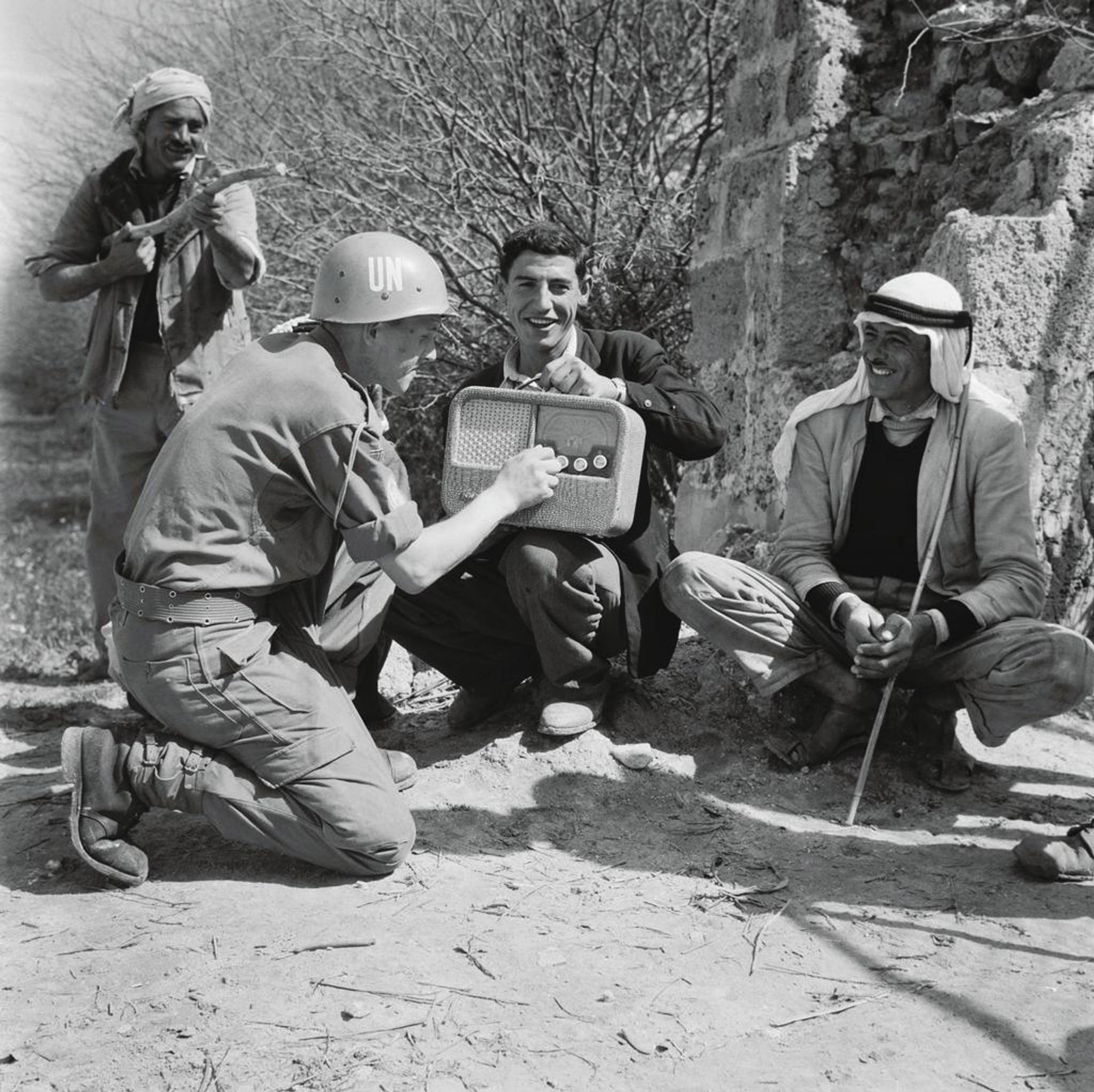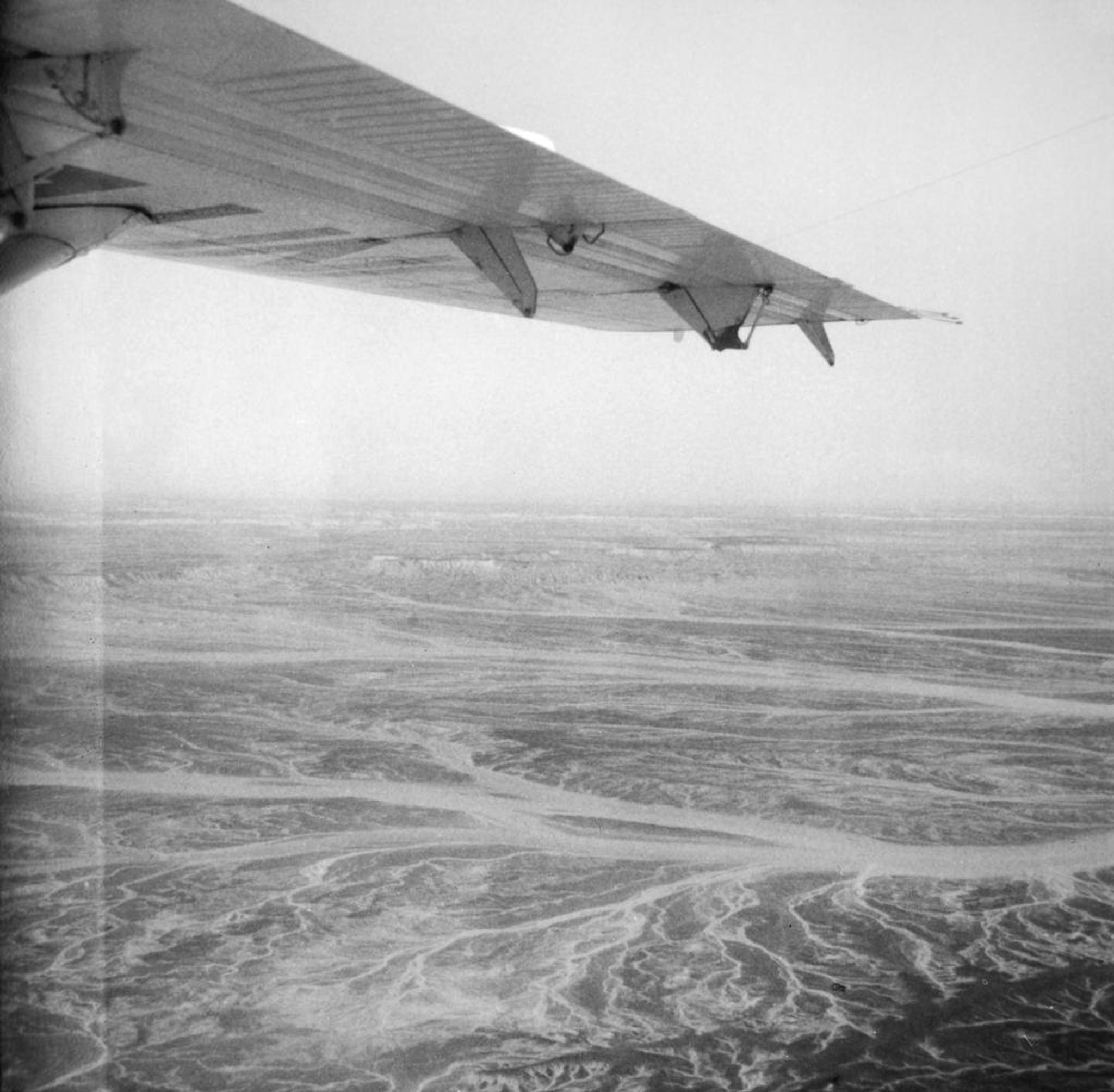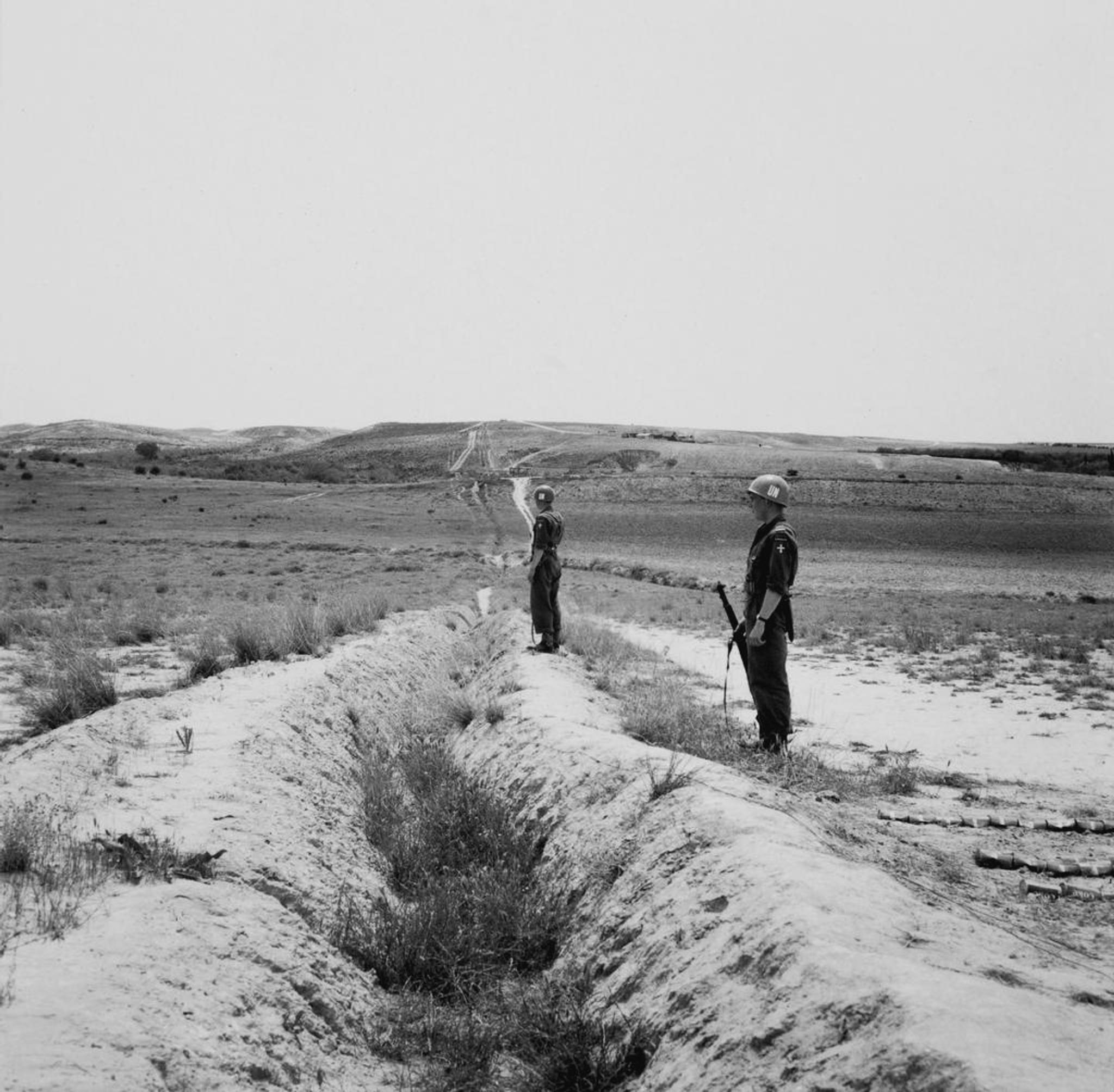
The United Nations and the Suez crisis
Jørgen Grinde went to the Middle East in a moment of upheaval and conflict in the region. Grinde’s photography interweaves the humanitarian, particularly the UN, with the military, offering context in ways rarely seen in images of this period. As a result of the 1948 war, Palestine was divided into three units: the new state of Israel, a West Bank under Jordanian control, and the Gaza Strip – a significantly reduced territory making up only part of what before the war was known as “the Gaza district” – under Egyptian rule by president Gamal Abdel Nasser.
In the autumn of 1947, the population of Gaza was 80,000. After the war, the number of people had tripled to 240,000. The majority of Gaza was now populated by Palestinians from other parts of the country – a country erased from the map.
In July 1956, Egypt nationalised the Suez Canal, and in response, France, Great Britain and Israel attacked on October 29th to prevent Egyptian control over the canal. Israeli troops occupied both Gaza and the Sinai Peninsula. The Soviet Union threatened to intervene, the UN General Assembly demanded a truce, and the United States pressured the three countries to withdraw. England and France did withdraw, but the Israeli army remained in Gaza and Sharm al-Sheikh.
On November 3rd, 1956, Israeli soldiers killed between 200 to 300 Palestinians in the refugee camps called Khan Younis and Rafah. According to Israeli officials, this was the result of skirmishes with Palestinian fidayeen – military resistance groups – a claim the refugees denied. Eyewitness reports tell of straightforward massacre.
On November 2nd and 5th, 1956, the UN General Assembly sent a peacekeeping force (UNEF) to oversee the truce border in Gaza and the international border with Egypt in Sinai and to act as a buffer between Israel and Egypt. This was the first peacekeeping force by the UN, with up to 6,000 soldiers. In March 1957, Israel withdrew from Gaza and Sharm al-Sheikh, and Egyptian administration returned to Gaza. Arriving in Gaza in the winter of 1956/57 and spring of 1959, Grinde observed the conflict up close.
In May and June 1967, Egypt declared that they no longer accepted the presence of UNEF, and shortly thereafter, the June War, otherwise called the Six-Day War, broke out.
In the same film rolls where we find most of the images of UNRWA and the Palestinian refugees, Grinde documented the work of the UNEF force. His photographs depict encounters between soldiers and Palestinians, demonstrations in the streets, and classrooms where photographs of Egypt’s president Gamal Abdel Nasser are hung above the blackboard. They place refugees into history - if not producers of it, they were subjects of it.
Overview over demonstration in connection with UNEF-forces taking over Gaza after the Suez Crisis. Gaza City, March 1957.
Danish UNEF soldiers holding back demonstrators during street demonstration in Gaza City, March 1957.
